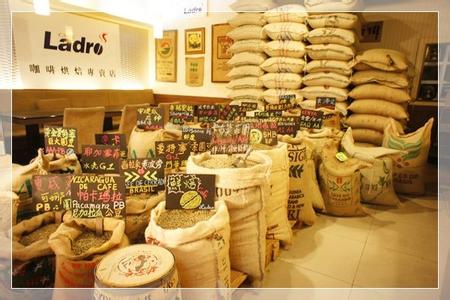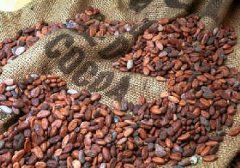Blue Mountain Coffee had a rough ride.
Blue Mountain Coffee is prohibitively expensive at $35 a pound, but the Jamaican coffee industry has struggled. In 1725, British Governor Rolls bought seven Tibica coffee saplings from French Martinique Island and planted them in st, near the Blue Mountains in eastern Jamaica. Andrew) own manor, it can be seen that Blue Mountain Coffee is also a French naval officer. The descendants of the "coffee mother tree" that Kerry stole from the Paris greenhouse in 1702 ○. Soon the coffee spread in the Blue Mountains.
The Blue Mountains are often shrouded in fog, and the sunlight seems to be covered with a layer of blue fog, hence the name. The heavy fog helps to lower the temperature in the afternoon and is very suitable for coffee growth. During the period from 18⊙○ to-838, the annual output of Jamaican coffee reached 70, 000 tons, making it one of the largest coffee producers at that time. But in the 184th ○ era, when Britain abolished slavery, slaves were freed and production costs soared, coupled with competition from Latin American neighbors, Jamaican coffee began to decline.
In 1891, the coffee cultivation industry was faced with difficulties. Although the government came forward to teach farmers to adopt correct cultivation methods, the decline was irreparable, and Canada, the largest buyer of Blue Mountain coffee, refused to order it because of its declining quality year after year. Aware of the seriousness of the situation, Jamaica established the Central Coffee washing Plant in 1944 to manage the grading and production process of Blue Mountain Coffee. The Coffee Administration was also set up at this time to help the coffee industry embark on a smooth road.
In 1973, there were four officially certified coffee processing plants, namely'M is Bank', 'silverHill',' Moy Hall' and 'Wallenford', which later joined the Tb,yman family's Old Inn Manor (old%vem). These five companies are currently the only five Blue Mountain coffee manufacturers with official certification. After 1980 ○, Japan funded the Jamaican coffee industry and introduced a semi-washed coffee pectin planer, that is to say, Blue Mountain Coffee now has two treatment methods: traditional washing and more advanced semi-washing. Whether semi-washing is not conducive to the cultivation of the elegant flavor of the traditional Blue Mountains has also been controversial in recent years.

Important Notice :
前街咖啡 FrontStreet Coffee has moved to new addredd:
FrontStreet Coffee Address: 315,Donghua East Road,GuangZhou
Tel:020 38364473
- Prev

Yega Coffee Coffee beans Ethiopian Coffee Yega Chefe producing area
Yega Xuefei is a small town with an elevation of 1200 to 2100 meters, which is also synonymous with Ethiopian boutique beans. Since ancient times, it has been a wetland, the ancient saying Yega means to settle down, and Sheffield means wetlands, so Yega Xuefei means to let us settle down in this wetland. Strictly speaking, Yega Xuefei is a by-product area of Sidamo. The town is located in the northwest of Sidamo, by the mountain.
- Next

Pure Blue Mountain Coffee Jamaica Coffee Blue Mountain Coffee Why is it so expensive?
Why is Blue Mountain coffee so expensive? This has something to do with the fact that the Japanese love the delicate and elegant smell of the Blue Mountains. In addition, the area of Jamaica
Related
- Detailed explanation of Jadeite planting Land in Panamanian Jadeite Manor introduction to the grading system of Jadeite competitive bidding, Red bid, Green bid and Rose Summer
- Story of Coffee planting in Brenka region of Costa Rica Stonehenge Manor anaerobic heavy honey treatment of flavor mouth
- What's on the barrel of Blue Mountain Coffee beans?
- Can American coffee also pull flowers? How to use hot American style to pull out a good-looking pattern?
- Can you make a cold extract with coffee beans? What is the right proportion for cold-extracted coffee formula?
- Indonesian PWN Gold Mandrine Coffee Origin Features Flavor How to Chong? Mandolin coffee is American.
- A brief introduction to the flavor characteristics of Brazilian yellow bourbon coffee beans
- What is the effect of different water quality on the flavor of cold-extracted coffee? What kind of water is best for brewing coffee?
- Why do you think of Rose Summer whenever you mention Panamanian coffee?
- Introduction to the characteristics of authentic blue mountain coffee bean producing areas? What is the CIB Coffee Authority in Jamaica?

